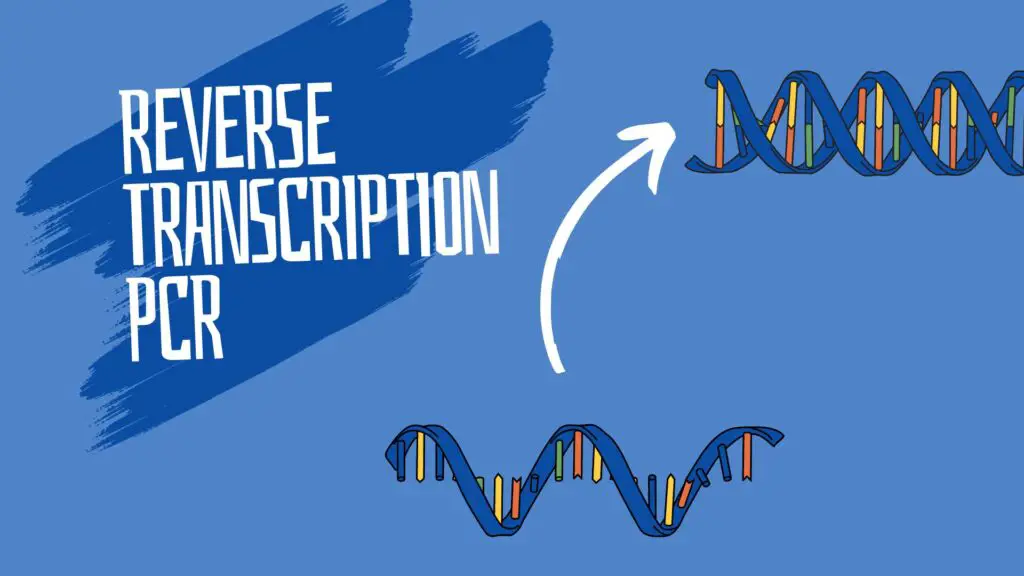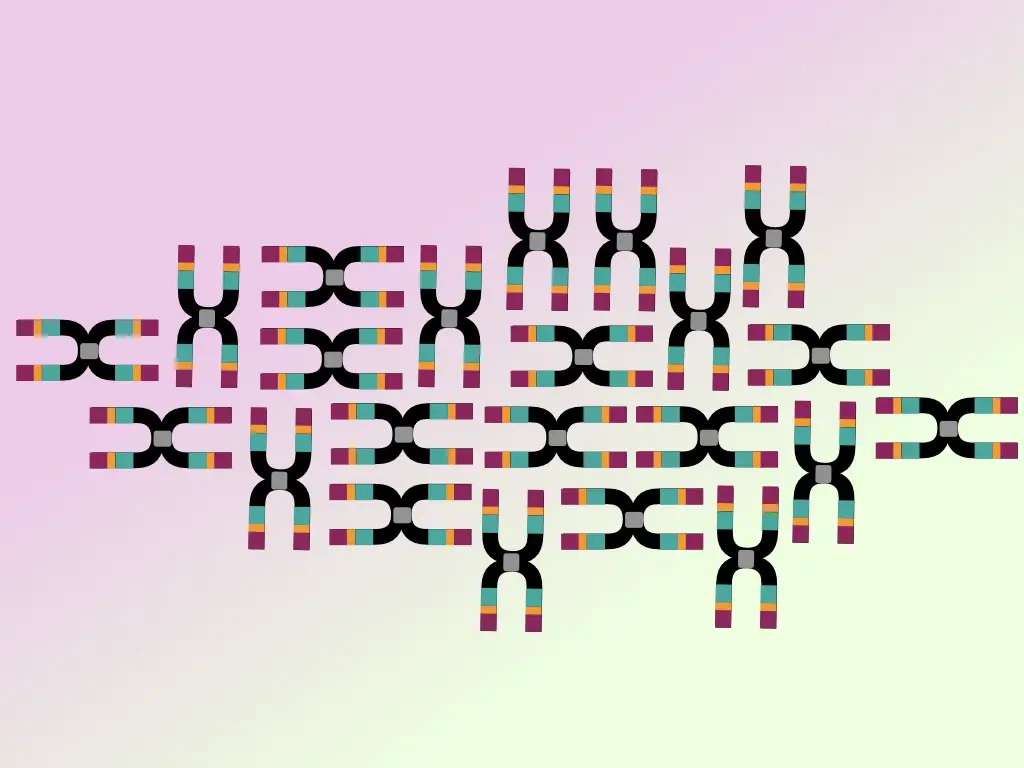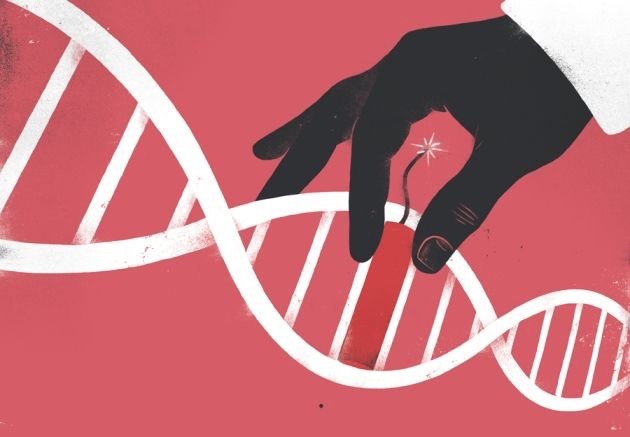“RT-PCR can effectively quantify copies of a gene present in the sample. Thus, it’s widely used in gene expression studies, cancer research and viral load estimation.”
PCR (Polymerase Chain Reaction) is an amazing molecular laboratory tool because it is used almost in every possible genetic experiment. The prime function of PCR is to amplify the DNA, meaning to produce as many copies of DNA as possible.
However, new-age PCR variants can also quantify the copies of a gene present in the sample. Quantification gives us more power in terms of precise gene expression studies. The technique is so beneficial in disease studies & diagnosis, cancer research, marker studies and microbial studies.
The variant is popularly known as qPCR or RT-qPCR. It uses RNA instead of DNA as a starting material, converts it, amplifies and quantifies it in a single or series of reactions. But one problem that scientists have to face is the additional reverse transcription step.
In this article, I will explain to you the concept of RT-PCR, what it is and how it’s done. I will also explain the principle, steps, process, applications, advantages and limitations of RT-PCR.
Stay tuned.
Key Topics:
What is RT-PCR?
RT-PCR stands for Reverse Transcription PCR or Reverse Transcriptase PCR. It is a quantitative technique used to estimate gene copies. It relies on the principle of reverse transcription which is a process ‘reverse’ to the transcription.
In reverse transcription, the cDNA is synthesized from the mRNA. In the natural transcription process, mRNA is formed from the DNA. Now first understand the concept of why scientists need to develop the RT-PCR.
Let’s start with the gene itself.
Not the DNA, but a gene can synthesize a protein that comprises only 3% part of the genome (roughly). During the transcription, a gene generates a message in the form of mRNA (messenger RNA) which later translates into a protein.
So by studying the mRNA, scientists can study the gene. Therefore, if we can quantify the mRNA, we can determine the copies of a target gene. Now, you may wonder, why we can not use mRNA directly. why we need to convert it into a cDNA?
Any RNA is more fragile, and can easily be degraded, and thus, it’s difficult to handle. It must be converted into DNA. After the discovery of reverse transcriptase enzyme by Temin H and Baltimore D in 1970, mRNA could be converted into cDNA.
Note that the cDNA is complementary and single-stranded DNA generated by reverse transcription of mRNA. So when we measure the copies of a particular cDNA (reverse transcribed from the particular mRNA) present in the sample, we can actually measure the gene expression.
Further to this, a few types of viruses called retroviruses have RNA as their genetic material and not DNA. Reverse transcription PCR also helps to study retroviruses like HIV or Hepatitis A through reverse transcription, amplification and quantification.
So RT-PCR is evolved to study genes and retroviruses, we can say. However, nowadays it has applications beyond that boundaries and is employed in various fields including healthcare, cancer research and diagnosis.
Previously, the Northern blotting technique has been utilized for gene expression studies. The northern blotting technique has poor sensitivity, specificity and accuracy. Contrary, RT-PCR or its latest version RT-qPCR comes up with great precision, sensitivity and accuracy.
Interestingly, Northern blotting and RT-PCR both use probe-based hybridization chemistry, however, northern blotting lacks amplification.
Principle of RT-PCR:
In the Reverse Transcription Polymerase Chain Reaction the RNA-dependent DNA polymerase, reverse transcriptase converts the mRNA into the cDNA. This process is followed by PCR amplification of the cDNA using the standard PCR setup.
The amplification of cDNA occurs using dNTPs, a set of primers, Taq DNA polymerase, water and PCR buffer. Later on, the amplified cDNA is quantified using the endpoint or standard curve analysis. And for that, a set of probes or fluorescent dye is also incorporated into the reaction.
Steps in RT-PCR:
Common steps in RT-PCR are RNA isolation, primer design and selection, reverse transcription, separation of RNA-DNA hybrids, PCR amplification, gene quantification and results analysis.
Let’s understand each step one by one.
RNA extraction:
The RT-PCR process initiates with RNA extraction. It’s a process to collect RNA, particularly the mRNA from the sample being processed. RNA extraction is a highly sensitive process as the RNase is present predominantly in nature.
In addition, RNA is a fragile molecule. So RNA isolation is a difficult and tedious process. But don’t worry. I have prepared an entire series on how to isolate RNA effectively. You can read it here: Category– RNA Extraction By Genetic Education.
Now afterward, from the total cellular RNA, mRNA has been isolated using the specially designed oligo (dT) columns. Read this article for more information: How to isolate mRNA from total cellular RNA.
Primer design and selection:
Three different types of primers used in the RT-PCR reaction are sequence-specific primers, Oligo (dT) primers and Random primers.
Sequence-specific primers:
Sequence or gene-specific primers are complementary primers to the target mRNA. These primers are used in the reverse transcription reaction. Here it binds to the particular target mRNA sequence only and synthesizes the cDNA.
Sequence-specific primers are commonly used in gene expression or RT-qPCR analysis. However, on the downside, it’s limited to a single mRNA or gene of interest only. It’s widely used in one-step RT-PCR.
Oligo (dT) primers:
Oligo (dT) primers, as the name suggests, are a short stretch of the thymine nucleotides that can bind to the poly- (A) tail of the target mRNA. Poly-(A) tail is a classic characteristic of the eukaryotic mRNA and is present on the 3’ end of it.
Now the oligo (dT) primers only target the mRNA 3’ end, bind there and start the synthesis of cDNA. Technically, the oligo (dT) primer also contains additional nucleotides, known as anchor nucleotides to seal the binding and prevent primer slippage.
So the benefit of using the oligo (dT) primers in the reverse transcription PCR is that they can only bind to the mRNA and thus other RNAs like tRNA, rRNA or smaller RNAs are avoided from the amplification, if not required.
Random primers:
Random primers, as the name suggests, are random oligonucleotide sequences that can bind to any location and any RNA species present in the sample. It’s a very short, single-stranded and artificially synthesized sequence of nucleotides.
Interestingly, it can bind to all types of RNA (tRNA, rRNA and mRNA) and is thus highly recommended when the sample or RNA is unknown and low starting material is available.
In addition, it is advisable to use random primers for transcripts with higher secondary structures. It gives high-yield cDNA, however, the cDNA generated by random primers is truncated or undesirable, sometimes.
| Primer types | Concentration | Length |
| Sequence-specific primers | 0.2 to 0.5 µM | 18 to 30 nt |
| Oligo (dT) primers | 0.1 to 0.5 µM | 15 to 20 nt (including the sequence) |
| Random primers | 0.5 to 1 µM | 6 to 12 nt |
Now, after the selection of primers, we can prepare the reaction for reverse transcription and PCR amplification.
We have written an amazing article on this topic which will give you more clarity on this topic. Read it here: PCR Primer Design.
Reverse Transcription:
The next step is the reverse transcription of mRNA into cDNA using the enzyme reverse transcriptase. In the PCR-coupled reaction (one-step RT-PCR) or two independent reactions (two-step RT-PCR), the cDNA is synthesized.
The RNA-dependent DNA-polymerase— reverse transcriptase, uses the short single-stranded primers and prepares a single-stranded mRNA complementary DNA (cDNA). The reverse transcription is followed by amplification.
Separation of RNA-DNA:
Now what we have after the reverse transcription is an RNA-DNA hybrid which must be separated before amplification. To complete this process the selected reverse transcriptase enzyme must possess RNase H activity.
If not, the RNase H can be added separately into the reaction. The RNase H cleaves the RNA from the RNA-DNA hybrids, this helps in efficient amplification of cDNA.
Note: RNase H can degrade longer mRNA prematurely and thus when the experiment is set to amplify longer mRNA— like for cDNA cloning, RNase H activity must be controlled.
PCR amplification:
The next step is PCR amplification. The newly prepared cDNA, which is the complementary sequence of our mRNA or a gene of interest is amplified in the PCR reaction.
The cDNA uses the Taq DNA polymerase, dNTPs, nuclease-free water and PCR buffer to synthesize the copies of the cDNA. The process of PCR amplification is said as second-strand synthesis while the conversion of cDNA from the mRNA is said as first-strand cDNA synthesis.
Gene quantification:
This step is coupled with the PCR reaction or amplification step, but I separated it to make it more understandable. After the amplification, the amplified template is quantified.
For quantification, either a fluorescent dye or a labeled probe is incorporated into the PCR reaction.
In dye-based chemistry, a fluorescent dye with the capacity to bind with the dsDNA is incorporated. So when the amplification occurs, dsDNA forms and the dye will bind with it and give us a signal as a positive amplification.
In probe-based chemistry, a fluorescence probe is incorporated into the reaction. It binds upstream to the primers. So when the Taq DNA polymerase starts synthesis, it hydrolyzes the probe which eventually emits fluorescence. The recorder records the signals as positive amplification.
Results analysis:
Two strategies for gene quantification are endpoint quantification and real-time amplification by exponential quantification. Put simply, during the endpoint quantification, the templates are measured at the end of the reaction while in the real-time amplification, the templates are measured in the real-time reaction, after the amplification of each template.
Now depending on the assay performed (end-point vs real-time) the data is collected and the expert analyzes the gel or graph to understand and interpret the results of RT-PCR. Two common strategies for RT-PCR analysis end-point and real-time quantification will be discussed in separate article.
One-step vs two-step RT-PCR:
Two types of RT-PCR that scientists commonly use are one-step RT-PCR and two-step RT-PCR.
One-step RT-PCR:
As the name suggests, in the one-step RT-PCR, two reactions– reverse transcription and amplifications are coupled in a single tube. Both occur in a single reaction without the requirement of separate reaction preparations.
The present variant is easy to handle, simple, handy and comes up with good sensitivity. Henceforth, it has been a prime choice for high throughput screening and repeat quantification.
One-step RT-PCR is a speedy process, reduces the chances of contamination (as it doesn’t require two separate reaction preparations) and involves less sample handling. It also minimizes the risk of RNA degradation.
On the downside, it comes up with limited optimization options and so is less flexible. In addition, the reaction conditions can be compromised, as both the reverse transcription and amplification occur in a single reaction so the present assay is less sensitive.
Furthermore, the reaction requires more starting material and the synthesized cDNA can not be stored, again the reason is similarly, both reactions are coupled.
In conclusion, the one-step RT-PCR is a best-suited assay for smaller labs having limited recourse and instrumentations. But it has higher chances of reaction failure, primer-dimers and non-specific amplifications.
Two-step RT-PCR:
In the two-step RT-PCR, both the reverse transcription and the amplification reactions occur in separate steps. Meaning, the lab personnel has to prepare two separate reactions– first for reverse transcription and second for amplification.
The first reaction includes the addition of dNTPs, primers, template mRNA and most importantly the reverse transcriptase enzyme. While the second reaction includes the addition of dNTPs, cDNA, primers, probes or dye for quantification and Taq DNA polymerase enzyme.
After the successful reverse transcription by the enzyme reverse transcriptase, the cDNA is amplified using the thermostable Taq DNA polymerase.
The inclusion of all three different primers makes the reaction more specific and accurate. In addition, we can store the cDNA for further processing as per our requirement and also need less starting material for the reaction.
It provides more flexibility and convenience in the reaction and also minimizes the chances of reaction failure. Hence, it is highly recommended for multiplexing, meaning, it is used for the quantification of many mRNA from a single sample.
The main advantage of the two-step technique is that we can optimize both reactions separately which eventually helps improve the overall accuracy for quantification.
On the downside, two-step RT-PCR techniques are time-consuming, prone to contamination and high cost as it involves one additional step.
In conclusion, the two-step PCR is required for the quantification of many transcripts from a single reaction and the detection of rare transcripts.
| One-step RT-PCR | Two-step RT-PCR | |
| Reaction | Single reaction for reverse transcription and amplification. | Two separate reactions– one for reverse transcription and another for amplification. |
| Primers | Sequence or gene-specific primers. | Gene-specific, oligo (dT) and random primer. |
| Advantages | High throughput screening and gene expression studies. Rapid. Requires fewer chemicals and experimental utilities. | Quantification of multiple and rare transcripts. Time-consuming. Requires more chemicals and experimental utilities. |
| Sensitivity | Less | High |
| Optimization chances | Less | More |
| cDNA | Can’t be stored. | Can be stored for further analysis. |
| Reaction | dNTPs, reverse transcriptase, Taq DNA polymerase, sequence-specific primers, probes or dye, PCR buffer, water and RNA. | Reaction 1: dNTPs, reverse transcriptase, random and oligo (dT) primers, buffer and RNA. Reaction 2: dNTPs, Taq DNA polymerase, sequence-specific primers, probes or dye, PCR buffer, water and RNA. |
First and second strand cDNA synthesis:
The synthesis of complementary single-stranded DNA from the RNA is known as first-strand cDNA synthesis. This process is simple and governed by the reverse transcriptase enzyme. However, second-strand DNA synthesis is a bit tricky.
In the second strand cDNA synthesis, enzymes reverse transcriptase, separate RNase H, and E coli polymerase I or T7 with exonuclease activity plays important roles.
First, the RNase H activity by the transcriptase or the separately provided RNase H cleaves the RNA into smaller portions and creates gaps in the RNA-DNA hybrid. Now DNA polymerase I or T7 DNA polymerase fills the gap between the RNA gaps by utilizing the RNA fragments as primers.
Now in the next step, the exonuclease activity of the polymerase removes the RNA fragments from the strand and fills the gap by synthesis. In the final step, the ligase joins the fragments and prepares a second cDNA strand.
In the next step, both the cDNA strands are separately utilized in the amplification process. The amplicons are quantified as well. This is a brief overview of the first and second-strand cDNA synthesis.
Advantages of RT-PCR:
- RT-PCR can perform both qualitative and quantitative analysis. Meaning we can actually quantify the allele or target gene from a cell population or tissue.
- It is a highly sensitive RNA detection technique having the capacity to detect a very low level of RNA present in the sample. Therefore, gene expression studies can be possible even from the limited starting material.
- The present technique is also capable enough to determine rare variant alleles.
- RT-PCR is a highly specific quantification technique. The use of sequence-specific primers allows the quantification of only a selected allele or gene. This gives it high accuracy and precision.
- The present type of PCR is a high throughput technique. Meaning, the whole process of amplification and quantification is almost automated. Once we put the reaction, everything will be done using a computer program.
- RT-PCR is also capable of doing multiplex analysis. Many genes’ expressions can be studied simultaneously in a single reaction.
- RT-PCR has minimal sample degradation. As the RNA is immediately converted into stable DNA species, it reduces the risk of sample degradation and allows accurate estimation of gene expression.
- Moreover, the RT-PCR is cost-effective, quick and versatile.
Disadvantages of RT-PCR:
- RT-PCR has a limited quantification range, as relative quantification requires a reference sample to determine gene expression. Alterations in the sample preparation for reference and sample affect the accuracy of gene expression.
- The succession of RT-PCR highly relies on how effectively primers and probes are designed which is a tedious and challenging process and also requires standardization.
- Techniques like two-step RT-PCR are prone to contamination. Contamination leads to reaction failure, non-specific amplification, primer-dimers and inaccurate quantification.
- RT-PCR comes up with experimental limitations. Even multiplexing can amplify only a few genes in a reaction.
- Moreover, the RT-PCR is inefficient in amplifying longer RNA species due to secondary structures in RNA.
- Lastly, experience and expertise are required to set up, perform and analyze RT-PCR experiments.
Applications of RT-PCR:
RT-PCR has been widely used in various fields for a long time. Here I am enlisting some of the important applications of RT-PCR.
Gene expression:
The major application of RT-PCR is in gene expression studies. By quantification of mRNA, RT-PCR can measure the expression of a gene. Such applications can be utilized in epigenetic, disease progression and drug response studies.
Clinical diagnosis:
RT-PCR has been widely used in the diagnosis of genetic diseases, identification of mutations and disease-causing variants. It can quantify the disease-causing variants very precisely and give us an idea about the severity of the disease.
Detection of viral infection:
Yet another crucial application of RT-PCR is in the detection of RNA viruses like– HIV, Hepatitis or SARS-CoV-2. In recent years, RT- PCR was used in the detection of SARS-CoV-2 COVID-19 during the COVID-19 pandemic, worldwide.
In addition, labs are routinely using the RT-PCR for quantitative analysis of HIV or Hepatitis samples.
Detection of pathogens:
RT-PCR has been known for its high precision and accuracy in detection. It can effectively identify and quantify microbial pathogens present in various samples like– food, environmental, clinical and biological samples.
Cancer research and diagnosis:
RT-PCR has revolutionized the field of cancer research and diagnosis. Thus, it’s used in cancer biomarkers, severity and progression studies. It’s also used to estimate therapy and/or drug response against cancer.
It can estimate cell or tissue-specific RNA changes associated with cancer. It can also study the amount of various gene-coding and non-coding RNA species and their role in cancer progression.
In addition, by looking into the gene expression profile of various cancer-causing genes, cancer stages can also be determined. Interestingly, such studies also help early prediction of a cancer stage.
Related article: Introduction to Cancer Genetics.
Forensic analysis:
Notably, RT-PCR and its recent advancements like— RT-qPCR have been employed in forensic analysis. Trace amounts of DNA obtained from crime scenes can be effectively studied using reverse transcription PCR.
Furthermore, RT-PCR is also used in plant research, immunology, virology, food safety, mutagenesis & cloning and functional & comparative genomic studies. It helps in vaccine development, stem cell research and ecology research.
Wrapping up:
In conclusion, RT-PCR is an amazing tool for genetic research. It’s widely used not only in research but also in diagnosis, and also for making new discoveries in the field of genetics.
Nowadays many ready-to-use kits are available for gene expression studies which are far too good. However, one has to learn sample handling and reaction optimization skills to effectively perform each assay.
Learning RT-PCR and associated techniques will surely help you in nurturing your career. I hope you like this article. If so please bookmark the page and share this article.
Sources:
Shiao, YH. A new reverse transcription-polymerase chain reaction method for accurate quantification. BMC Biotechnol 3, 22 (2003). https://doi.org/10.1186/1472-6750-3-22.
Quantitative Real-Time PCR by Bustin et al., (597).
Subscribe to our weekly newsletter for the latest blogs, articles and updates, and never miss the latest product or an exclusive offer.





Hi sir… If there is acertification courses of pcr techniques?